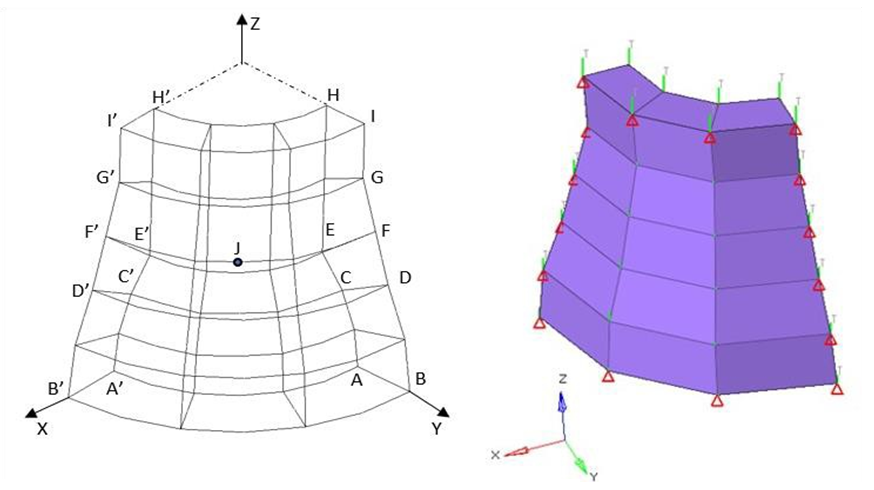OS-V: 0070 Solid Cylinder/Taper/Sphere - Temperature
Test No. LE11 The model is a thick solid cylinder subjected to linear temperature gradient in the radial and axial direction. OptiStruct examines the direct stress at the point A inside the cylinder on the y axis for linear static analysis.

Model Files
Before you begin, copy the file(s) used in this problem
to your working directory.
Benchmark Model
Second order Hexahedral, Penta and Tetra elements are used to create the coarse and fine mesh. A Linear temperature gradient of T°C = (x2 + y2)1/2 + z is applied in the radial and axial direction from the center of the cylinder. Only one quarter of the cylinder is considered.
The material properties are:
- MAT1 Isotropic
- Young's Modulus
- 210 x 103 MPa
- Poisson's Ratio
- 0.3
- Coefficient of Thermal Expansion
- 2.3 x 10-4/°C
Linear Static Analysis Results
All results are normalized with the target value
(-105 MPa).
| Direct Stress at Point A (MPa) | Normalized with the Target Value | |
|---|---|---|
| Solid Hexahedral: | ||
| Hex20 coarse | -93.21 | 1.126488574 |
| Hex20 fine | -99.12 | 1.059322034 |
| Solid Wedges: | ||
| Penta15 coarse | -100.3 | 1.046859422 |
| Penta15 fine | -103.7 | 1.012536162 |
| Solid Tetrahedral: | ||
| Tetra10 coarse | -91.97 | 1.141676634 |
| Tetra10 fine | -98.68 | 1.064045399 |
Reference
NAFEMS R0015 - Selected benchmarks for natural frequency analysis